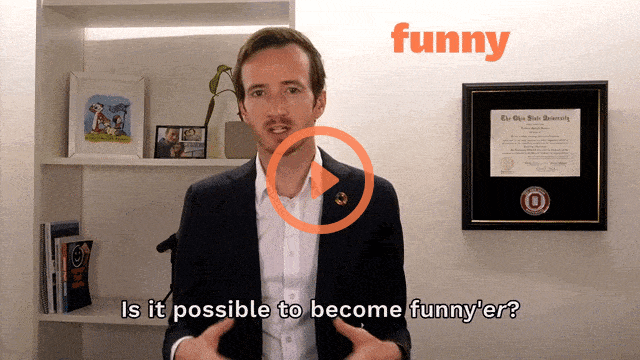The most important part of any stand-up set is the first 30 seconds. It is in that small time frame that an audience decides if you are: funny, potentially funny, or not funny at all. If they decide you’re funny, you have them on your side the rest of your set. If they think you might be funny, but they aren’t sure yet, you have another 30 seconds to prove you are. If they don’t think you’re funny, then you are unlikely to change their mind by the end of your set, regardless of how well you do.
Those first 30 seconds are just like the first 30 seconds (maybe a little more grace here, let’s say minute or two) of any recommendation or proposal you give at work. Many know this concept as “headnodding”–get people in agreement early on (make them realize you’re funny), and they are much more likely to agree with you later.
It seems pretty obvious that you would want to start off on a good foot, but how do you do that? Well in comedy, it’s all about relating to the audience right off the bat, and avoiding anything that might cause people to disagree with your view points. Often a good introduction relates to something the entire audience can be a part of (such as a joke about the city, something a previous comic said, or the ridiculousness of your own voice…) This starts the “headnodding” (“You’re right, he does sound a bit like Fran Drescher’).
So how does that apply to business? Does that mean you should start your next presentation off with some self-deprecating humor? Not necessarily (though comedy is under-utilized here in the workplace). What it does mean is that you want to start off any presentation establishing that you are all on common ground. If you are proposing a solution to a problem or “opportunity,” confirm with the audience that you all agree that there is, in fact, a problem, and you agree what it is.
As simple and easy as it sounds, it’s surprising how many people will start off a recommendation with something not everyone agrees with–often times it only coming down to something as simple as word choice. And the easiest way to avoid this is to start your recommendation with facts, not opinions. By stating the facts of the situation (sales are down, the budget is cut, your voice is distinctly different), everyone is on board.
Then, once they’ve settled in and have already been nodding along (not nodding off) to the facts, you transition into the more controversial stuff (controversial meaning where you may not have alignment yet, aka your recommendation, not your thoughts on on Roe vs Wade). Now that they’ve all laughed about your voice, you can hit them with something that they may not agree with (politics, views on drinking, stance on religion), but they will be open to listening to. And if you’ve done your homework, and truly offering a great “solution,” the “laughs” will come.


